Brugge is the quintessential old European city with charming cobblestone streets and picturesque canals.
Brugge or Bruges, population 118,000, is the capital city of West Flanders in Belgium. It is written as Bruges in English and French, pronounced “broozh” but in the native Flemish/Dutch it is spelled Brugge, pronounced “broo-gha”. There are 3 official languages in Belgium – Dutch, French and German. The Dutch spoken in the Netherlands and the Dutch spoken in Belgium are similar but like American English and British English, there are pronunciation and vocabulary differences. The Dutch spoken in the Netherlands is said to have closer English associations and more guttural sounds, whereas the language spoken in Belgium has a French influence with softer sounds. Regardless of the dialect or language, we can all agree that this historic Belgian city is one exceptional destination.
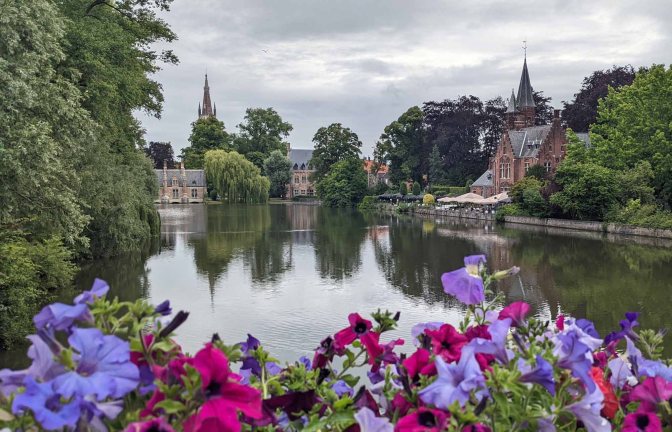
Much of the medieval architecture in Brugge remains intact and the “Historic Center of Brugge” is a UNESCO World Heritage Site. It is one of the best preserved medieval towns in Europe and Burg Square is arguably the most stunning area of the city.
Stadhuis Brugge
It is this large square where visitors are able to take a horse and buggy ride through the city. We loved hearing the daily clop-clop-clop of the horses.
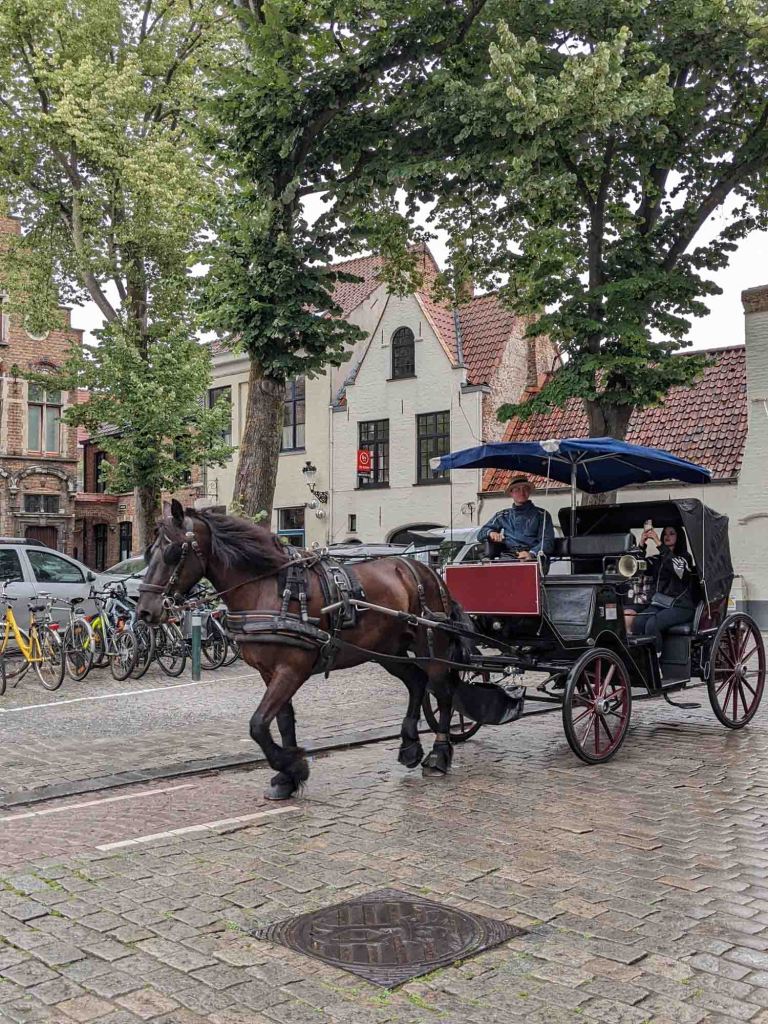
Built in 1376, The City Hall is the oldest building in the square. The cream-colored gothic architecture has contrasting bright red painted window frames and dormers, gold embellishments, a steel blue-gray roof and statues of men from the Court of Flanders intermingled with biblical figures.
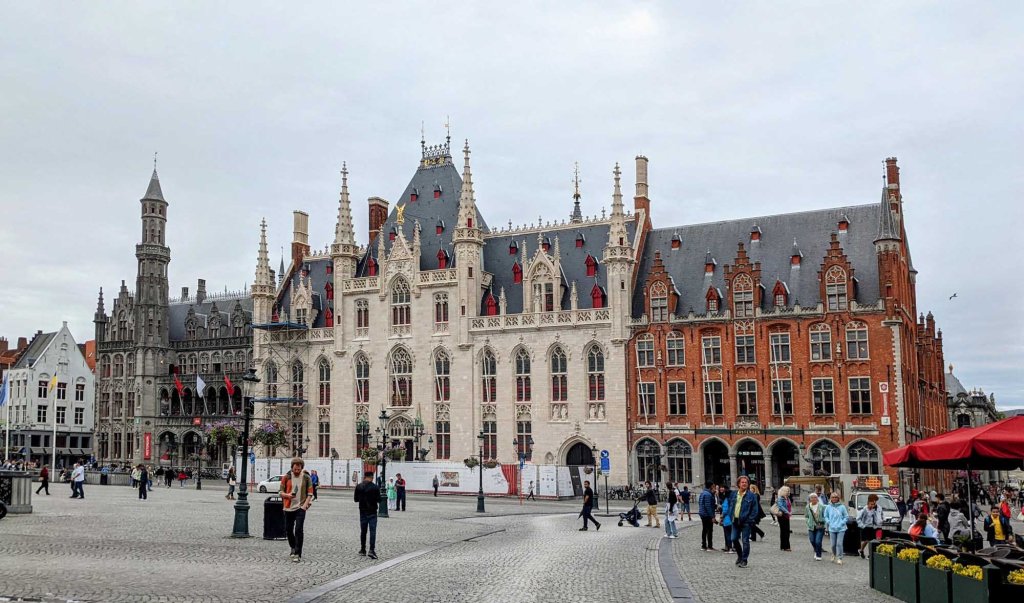
Inside are spectacular murals depicting Brugge’s history. In the chamber are original documents and paintings and on the first floor life-size portraits of former kings, emperors, mayors and even Napoleon greeted us. No surprise that weddings are still regularly performed in this lavish hall.
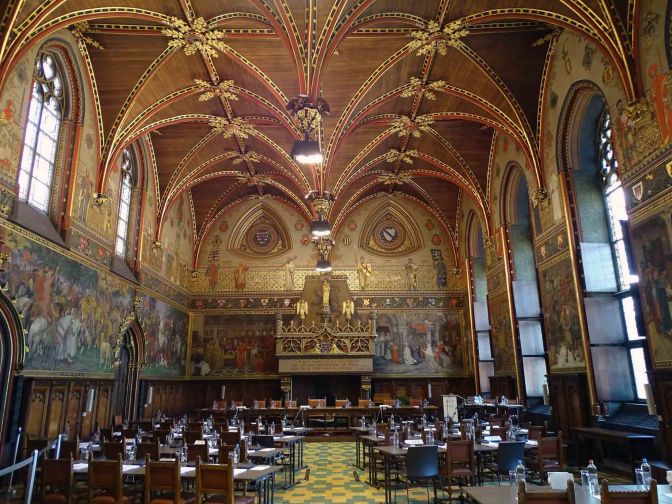
Left of the Stadhuis is the Brugse Vrije – the Palace of Liberty; the Old Courthouse. A courthouse for more than 200 years, today this building houses the city archives, the entire written history of Brugge. The brilliant white facade decorated with gold trim looks like a fancy cake. A golden Lady of Justice statue is on the very top of the building. In the former alderman’s chamber is a monumental 16th century fireplace. The intricately carved mantelpiece in oak, marble and alabaster is a tribute to Emperor Charles V who freed Belgium from France’s rule.
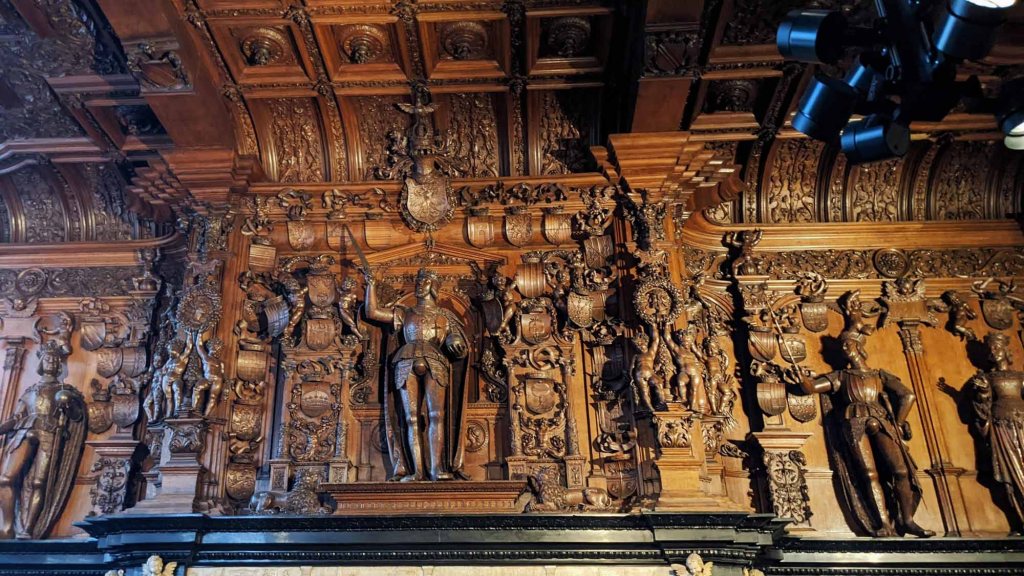
Historium Brugge
Yet another attractive piece of the city’s architecture, this one was built in 1902. Here we enjoyed a short interactive film that took us back in time to experience Brugge in her Golden Age.
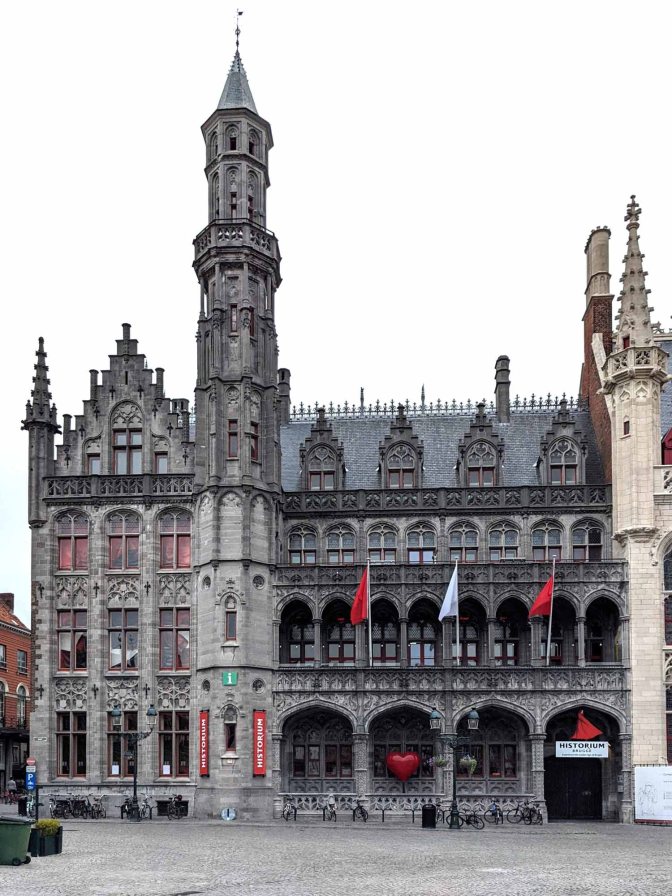
We listened, watched and walked through various rooms following the artist, Jan van Eyck’s apprentice, as he narrated a story from medieval times – his lifetime. In the virtual reality tour the apprentice took us past 15th-century architecture, including the Waterhalle a large warehouse area that stood on Market Square for 500 years and the spot where the Historium is now loacted. Jan van Eyck was a popular local painter and his apprentice was in awe of him. Jan van Eyck was one of the innovators of the style, Early Netherlandish, as well as a significant representative of Early Northern Renaissance art.
The painting below is called The Man with the Red Turban and is presumed to be a self-portrait of Jan Van Eyck (1390-1441).
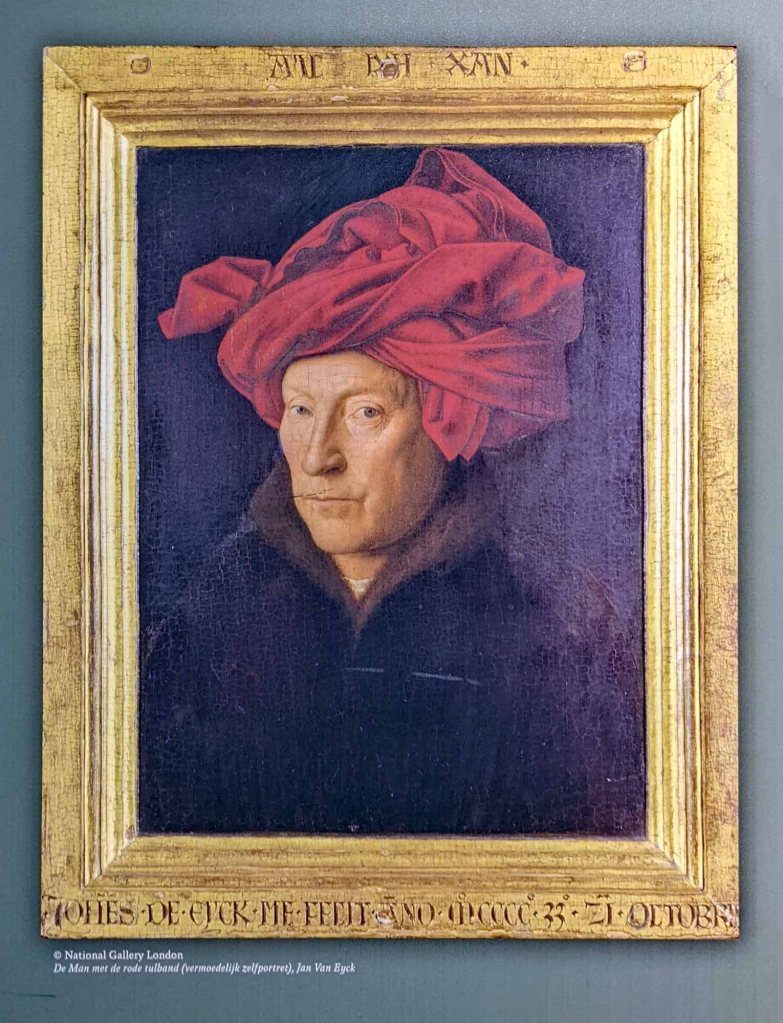
Arentshuis Museum
Arents House hosts an extensive collection of paintings by Frank Brangwyn (1867-1956). Although born in Brugge, this prolific artist was Welsh. He painted, drew, produced designs for stained glass, furniture, carpets, jewelry, ceramics, glass tableware, buildings and interiors, was a lithographer, a woodcutter and a book illustrator. He painted vivid scenes of the hard life on the docks and factories. He also traveled extensively and painted of his rather exotic travels. We liked this jananese-style woodblock piece, entitled Trees in a Snowy Landscape which Brangwyn created in 1927.
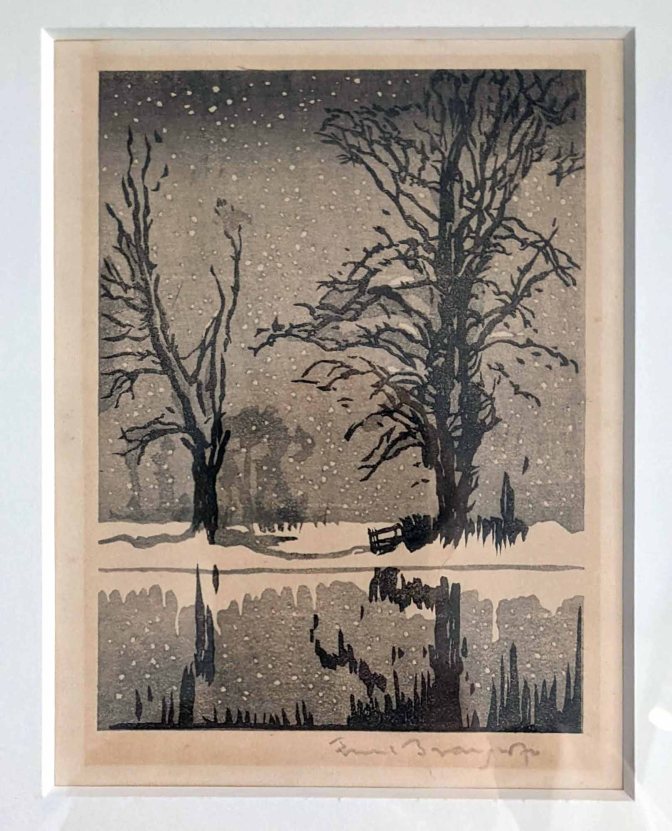
Groeningemuseum
The Groeninge Museum is referred to as having the best of Belgium art. They have a renowned collection covering 6 centuries of medieval and early modern art masterpieces. Members of the 15th century Early Netherlandish school of painters are well represented, including works by Jan van Eyck and Hans Memling.
In our humble opinion, this is an unmissable stop; we loved our time spent viewing the paintings. This 1814 touching painting is of a man and his daughter by Belgian artist, Joseph-Denis Odevaere (1778-1830).
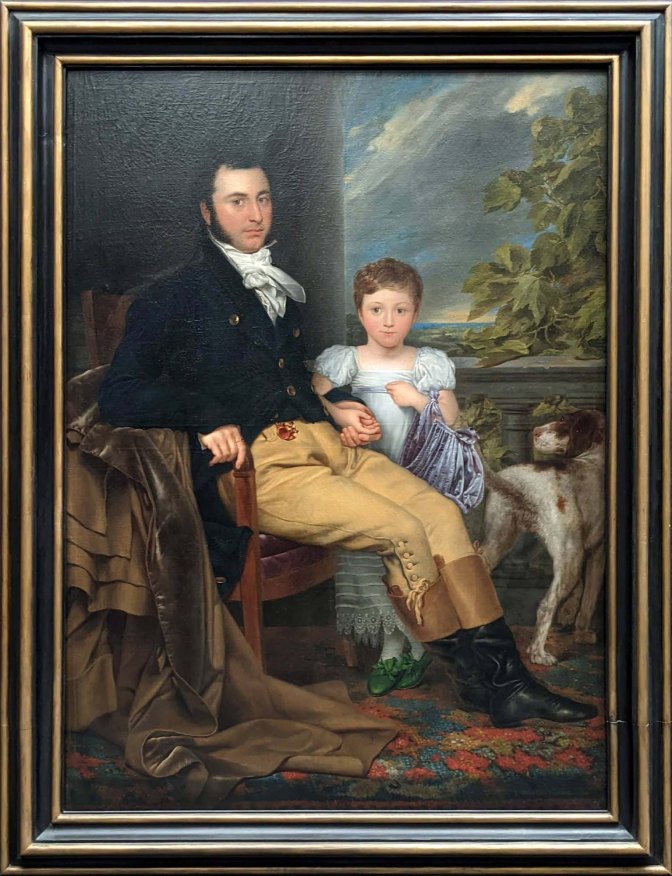
Gruuthusemusem
The Gruuthuse Museum, located in the former home of a wealthy medieval family, is filled with decorative arts from the 15th to 19th century. The house actually connects to the adjacent Church of Our Lady, Brugge which provided the homeowners access to a private viewing suite in the church.
The museum displays both the interior of a house of a well-to-do family as it would have been in the late Middle Ages and a collection of furniture, bobbin lace, objects in gold and silver, weapons, musical instruments, paintings, ceramics and Flemish tapestries from the 16th and 17th century.
Wikipedia definition: “A chatelaine is a decorative belt hook or clasp worn at the waist with a series of chains suspended from it. Each chain is mounted with useful household appendages such as scissors, thimbles, watches, keys, vinaigrette, and household seals. This beautiful chatelaine has a lovely case for each object.
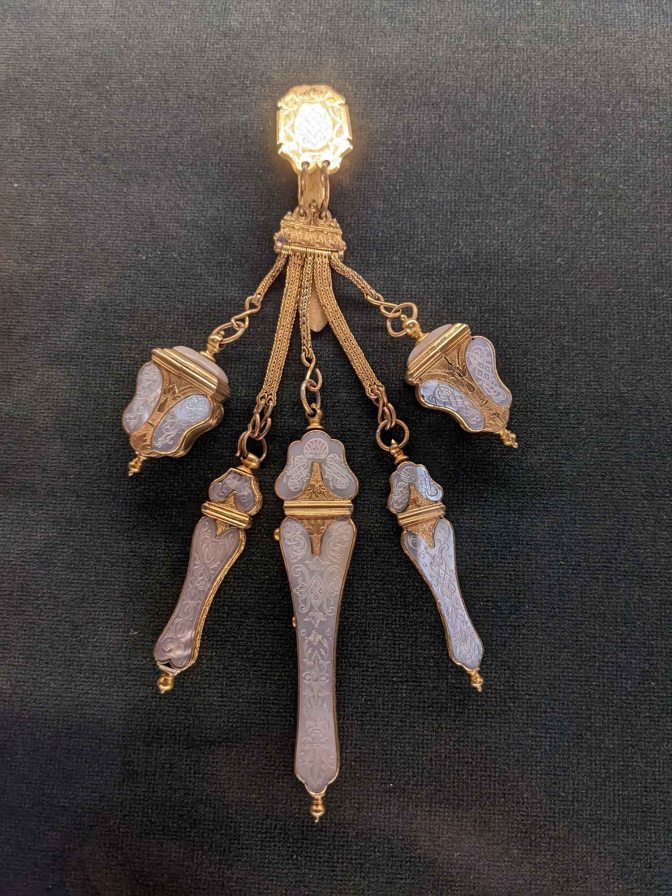
Our photo below shows part of the UNESCO World Heritage Site of the Princely Beguinage Ten Wijngaerde. Founded in 1244, this beguinage, similar to dozens of others in Belgium and the Netherlands, was a building complex that consisted of a gothic church and a couple of dozen white painted houses built around a central yard. Other buildings were used as a brewery, a bakery, a hospital and some farm buildings. The complex was created to house lay religious women who lived in the community without taking vows or retiring from the world. Many beguines came from noble backgrounds. They performed charitable works for their communities, they occasionally provided religious guidance, some preached to the people and many wrote spiritual texts. This is the only preserved beguinage in Brugge.
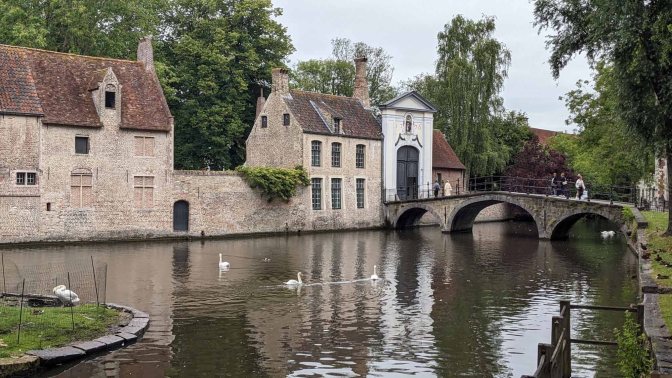
Did you know Belgium has more castles per square inch than any other country in the world?
We visited this glorious city in early summer and would love to return to experience other seasons. Brugge, Belgium competes favorably with our other favorite European city, Wrocław, Poland.
Proost from these Bruggeling,
Ted + Julia
View our Arentshuis Museum photo album here
View our Bruges City Hall photo album here
View our Groeninge Museum photo album here